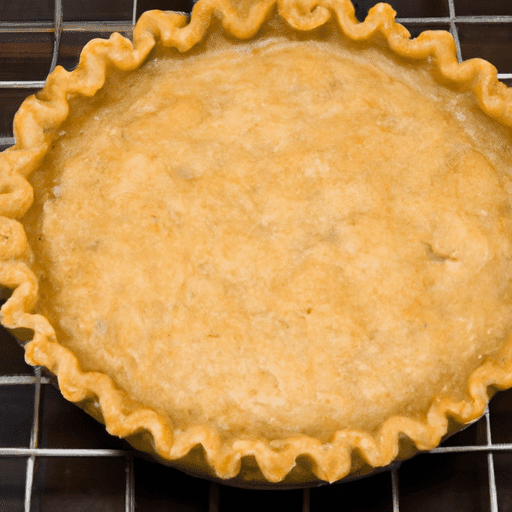Mastering Pâte Brisée: The Golden Crust of Gastronomy
Whether you’re crafting a savory quiche or a sweet fruit tart, the success of any dish lies within its foundation. In the realm of pastry, one versatile and delectable option takes center stage – Pâte Brisée. Its flaky, golden crust encases a world of flavors, making it a beloved staple in kitchens across the globe. In this blog post, we’ll dive into the science, flavors, history, and culinary applications of this classical French pastry dough.
The Essence of Pâte Brisée
Translated from French as “broken dough” or “shortcrust pastry,” Pâte Brisée delivers a tantalizing combination of texture and taste. With deep origins in French culinary traditions, this pastry dough boasts a subtle richness and an irresistible lightness. Its delicate flakes effortlessly melt in the mouth, leaving behind a satisfying buttery sensation.
Cooking with Pâte Brisée
With its adaptability to both sweet and savory preparations, Pâte Brisée serves as a remarkable canvas for culinary creativity. Once you’ve mastered this dough, a multitude of gastronomic adventures await you:
1. Quiches and Tarts
Pâte Brisée acts as the foundation for traditional quiches and tarts, lending its buttery flavor and crumbly texture to the dish. The slightly crisp crust beautifully complements creamy fillings, such as quiche Lorraine with its silky blend of eggs, cream, and smoky bacon. Alternatively, explore the realms of sweet satisfaction by crafting fruit tarts, where the delicate crust ingeniously balances the bright flavors of fresh berries or caramelized apples.
2. Hand Pies and Turnovers
Pâte Brisée shines in handheld delights, such as flaky turnovers and savory hand pies. Fill them with a medley of ingredients, from savory combinations like spinach and feta to sweet pairings like spiced apple and cinnamon. The crust’s ability to maintain its lightness even when held in the hand adds to the overall enjoyment of these delectable treats.
3. Galettes and Pot Pies
Pâte Brisée perfectly complements rustic dishes, like hearty galettes and pot pies. Its flaky layers elevate classic fillings such as chicken and leek or roasted vegetables, adding a luxurious touch to every bite. And let’s not forget the ultimate comfort food – a rich, meaty pot pie with a golden crown of pâte brisée.
Exploring the Nutritional Aspects
While Pâte Brisée undoubtedly satisfies our taste buds, it’s important to explore its nutritional profile as well. Being primarily a flour and butter-based dough, it offers a good source of energy. However, note that moderation is key given its butter content. Remember, indulging in culinary delights can be a part of a balanced lifestyle.
A Brief Glimpse into the History
Pâte Brisée traces its roots back to medieval Europe, where cooks sought ways to create buttery crusts to encase various fillings. However, it wasn’t until the early 19th century when famous French chef Marie-Antoine Carême popularized this dough in his culinary repertoire. Since then, Pâte Brisée has remained a fundamental element of classic French cuisine and is now celebrated worldwide.
Fun Facts About Pâte Brisée
- Pâte Brisée is often considered a cousin to its flakier counterpart, Pâte Feuilletée, commonly known as puff pastry.
- The key to achieving the perfect flakiness lies in handling the dough gently to prevent the development of gluten, which can lead to a tougher crust.
- Adding herbs, spices, or citrus zest to the dough can infuse it with additional flavors and elevate the dish.
- Pâte Brisée can be made in advance and stored in the refrigerator or freezer for future culinary endeavors.
Now armed with a deeper understanding of Pâte Brisée, it’s time to roll up your sleeves and embark on a culinary journey. Allow your creativity to flourish with the flake of the crust, while reveling in the rich, buttery flavors that this versatile pastry dough brings to your table. Bon appétit!
Pâte brisée
- Origin: Pâte brisée is a French term that translates to “shortcrust pastry” in English. This pastry dough originated in France and has been a staple in French cuisine for centuries.
- Common Uses: Pâte brisée is versatile and is often used as a base for both sweet and savory pies and tarts. It is commonly used to make quiches, fruit tarts, custard pies, and savory meat pies.
- Nutritional Benefits: Pâte brisée is primarily made of flour, butter, water, and a pinch of salt. It is not particularly nutrient-dense, but it can provide a source of energy from carbohydrates and a small amount of fat from the butter.
- Unique Properties: Pâte brisée has a rich, buttery flavor and a crumbly texture. It is known for its ability to hold its shape when baked, creating a sturdy crust for various fillings.
- Historical Significance: Pâte brisée, along with other French pastries, has a long history dating back centuries. It has been a fundamental pastry dough in French cuisine and is still widely used today in both home cooking and professional kitchens. Its versatility and deliciousness have made it a beloved classic in French culinary tradition.




Use the share button below if you liked it.
It makes me smile, when I see it.